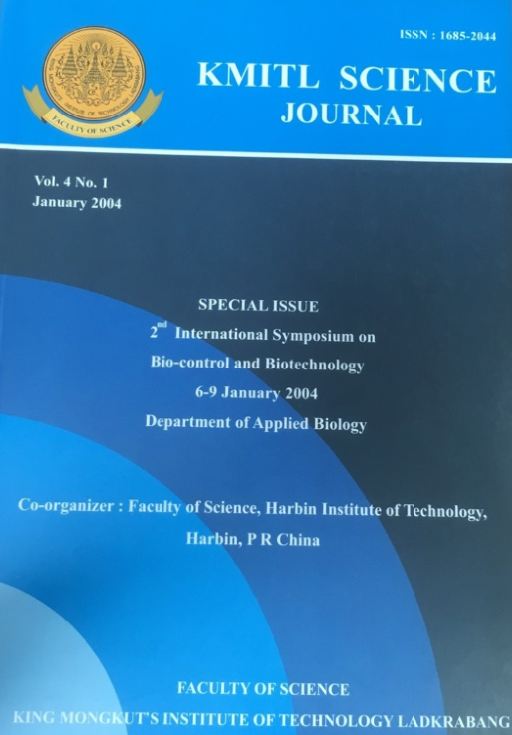Expressed Sequence Tags (EST)
Main Article Content
Abstract
The focus on genome research has shifted from structural genomics to functional annotation. A rapidly growing area of functional research is the generation of expressed sequence tags (EST) in which a large number of randomly selected cDNA clones are partially sequenced. The generation of EST has proven to be a rapid and economical approach to the identification and characterization of expressed genes. Currently expressed sequence tag projects have accumulated over 15 million un-annotated files from more than 5318 cDNA libraries deposited in the public domain. Therefore, in this review we summarize the advantages of EST research, strategies for EST study, weaknesses of EST analysis and finally conclude with our work in EST research.
Keywords: EST, genome, bioinformatics
Corresponding author: E-mail: yangq@hope.hit.edu.cn
Article Details
Copyright Transfer Statement
The copyright of this article is transferred to Current Applied Science and Technology journal with effect if and when the article is accepted for publication. The copyright transfer covers the exclusive right to reproduce and distribute the article, including reprints, translations, photographic reproductions, electronic form (offline, online) or any other reproductions of similar nature.
The author warrants that this contribution is original and that he/she has full power to make this grant. The author signs for and accepts responsibility for releasing this material on behalf of any and all co-authors.
Here is the link for download: Copyright transfer form.pdf
References
[2] J. Kawai, A. Shinagawa, K. Shibata, M. Yoshino, M. Itoh, Y. Ishii, T. Arakawa, A. Hara, Y. Fukunishi and H. Konno, Nature (London), 409, 2001, 685-690.
[3] M.D. Adams, A.R. Kerlavage, C. Fields, and J.C. Venter, Nat. Genet., 4, 1993, 256-267.
[4] M.D. Adams, J.M. Kelley, J.D. Gocayne and M. Dubnick, (1991). Single-run partial sequencing of randomly selected cDNA clones is now a widely used tool in genome research
[5] H. Xiao, C.R. Merril, A. Wu, 6. Olde, R.F. Moreno, A.R. Keravage, W.R. McCombie and J.C. Venter, Complementary DNA sequencing: expressed sequence tags and human genome project. Science, 252, 1991, 1651-1656.
[6] M.S. Boguski, T.M.J. Lowe and C.M. Tolstoshew, dbEST-database for expressed sequence tags. Nature Genet., 4, 1993, 332-333.
(Sasaki et al., 1994 Sasaki T, Song J, Koga-Ban Y, Matsui E, Fang F, Higo H, Nagasaki)
[7] M. Hori, M. Miya, E. Murayama-Kayano, T. Takiguchi, A. Taka-suga, T. Niki, K. Ishimaru, H. Ikeda, Y. Yamamoto, Y. Mukai, I. Ohta, N. Miyadera, I. Havakkala and Y. Minobe, Toward cataloguing a11 rice genes: large-scale sequencing of randomly chosen rice cDNAs from a callus cDNA library. Plant J., 6, 1994, 615-24.
[8] M.H. Polymeropoulos, H. Xiao, C.R. Merril, A.B. Wu, R.F. Olde and R.F. Moreno, Complementary DNA sequencing : Expressed sequence tags and human genome projects. Science 252, 1991, 1651-1656.
[9] M.D. Adams, M. Dubnick, A.R. Kerlavage, R. Moreno, J.M. Kelley, T.R. Utterback, J.W. Nagle, C. Fields and J.C. Venter, Sequence identification of 2375 human brain genes. Nature, 355, 1992, 632-634.
[10] M.D. Adams, A.R. Kerlavage, R.D. Fleischmann, R.A. Fuldner, C.J. Bult, N.H. Lee, E.F. Kirkness, K.G. Weinstock, J.D. Gocayne and O. White, Initial assessment of human gene diversity and expression pattern based upon 83 million nucleotides of cDNA sequence. Nature, 377, 1995, 3-17.
[11] S.J. Wheelan and M.S. Boguski, Late-night thoughts on the sequence annotation problem, Genome Res., 8, 1998, 168-169.
[12] N. Pavy, S. Rombauts, P. Déhais, C. Mathé, D.V. Ramana, P. Leroy and P. Rouzé, Evaluation of gene prediction software using a genomic data set: application to Arabidopsis thaliana sequences, Bioinformatics, 15, 1999, 887-899.


